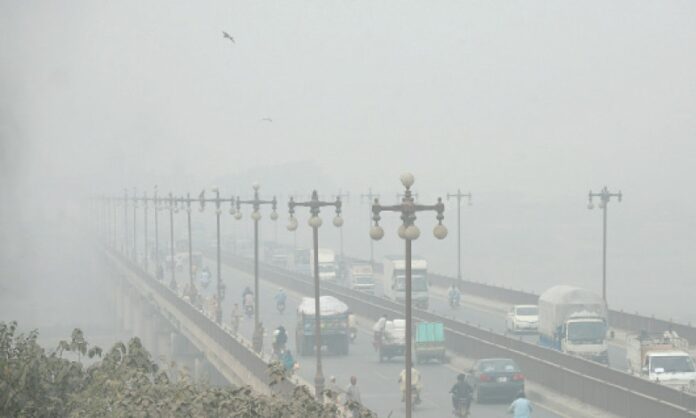LAHORE: Lahore’s worsening smog crisis has sparked a public health emergency, with over 15,000 cases of respiratory and viral infections reported in just 24 hours on Wednesday.
City hospitals, including Mayo Hospital (4,000+ cases), Jinnah Hospital (3,500 cases), Gangaram Hospital (3,000 cases), and Children’s Hospital (2,000+ cases), are overwhelmed with patients suffering from dry cough, breathing difficulties, pneumonia, and chest infections.
Medical experts are particularly concerned about children and individuals with pre-existing conditions. “Special children are severely affected,” said Professor Ashraf Zia, who also warned of an alarming rise in viral diseases, including pneumonia, chest infections, and skin conditions.
In response to the smog crisis, the Punjab Transport Department has introduced strict guidelines to reduce vehicle emissions.
Light transport vehicles emitting smoke will face fines of Rs2,000 for first-time violations and Rs4,000 for repeat offenses. Heavy vehicles such as buses and trucks are prohibited from operating until they meet emission standards. Daily and weekly reports on enforcement actions are being mandated.
The Punjab government has also extended school and college closures to five additional divisions as air pollution worsens. Existing closures in Gujranwala, Lahore, Multan, and Faisalabad divisions will continue, with officials aiming to mitigate the environmental and health impacts of the crisis.
Authorities have urged residents to take precautions, avoid outdoor activities, and seek medical attention if experiencing severe symptoms.
Earlier on November 10, it was reported that hospitals in Lahore had seen over 35,000 cases in just one week.
The surge in patients suffering from respiratory issues, skin problems, and eye irritation has overwhelmed medical facilities, despite the government’s ongoing efforts to tackle the growing smog.
Hospital sources say the majority of patients are suffering from dry coughs, breathing difficulties, pneumonia, and chest infections, particularly among children. Many others have been affected by severe eye irritation, dry eyes, and various skin diseases. Individuals with pre-existing heart conditions and asthma are also facing heightened risks due to the deteriorating air quality.























